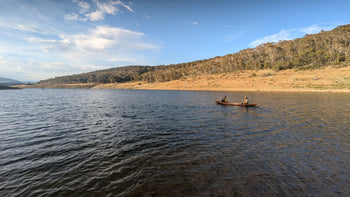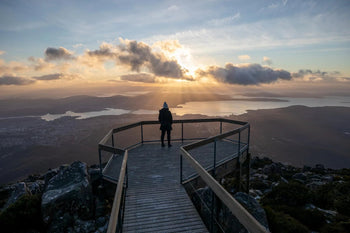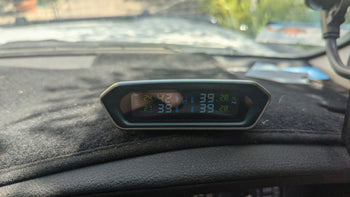

In the third ‘deep dive’ in our dry season touring series, we look at the top tips for a trip to the Sunshine State.
It’s never too soon to start planning your dry season touring holiday to Queensland, whether you’re travelling next year or the one after.
Much has been written about when the Sunshine State’s wet season starts and ends, but not so much about where the two-season year (wet and dry) meets the four-season year (spring, summer, autumn, winter). In other words, if the intersection of both was geographic rather than temporal, where does the wet season start and end?

Officially, that’s the Tropic of Capricorn. It’s the southernmost circle of latitude along which the sun can be directly overhead at midday.
Therefore, this means that Boulia is located in the tropics, but Bedourie isn’t.
Longreach is (the Tropic of Capricorn marker outside the Longreach Regional Council office shows a directional marker pointing in one direction to the ‘Temperate Zone’ and to the ‘Torrid Zone’ in the other) but Ilfracombe, 19km away and in the same local government area, isn’t. The Longreach Region Explore Centre (Visitor Information Centre) is in the ‘Temperate Zone’ while Longreach Railway Station — less than 300m away — is in the ‘Torrid Zone’.
Parts of Emerald are in the tropics, but most of it isn’t. Rockhampton is, but most of its suburb of Gracemere isn’t.
All this said, rather than split hairs about the location of places vis-à-vis their distance south of the Tropic of Capricorn (and whether or not they have a wet season and a dry season), I’m going to run with the view that most of Queensland has a wet season.
Why? Because the Bureau of Meteorology (BOM) and Commonwealth Scientific and Industrial Research Organisation (CSIRO) consider that most regions in Queensland have a wet season. Even the Desert Channels region, which includes Birdsville, Boulia and Longreach, has a wet season from October to April according to the BOM. This wet season comprises a build-up (October to December) and a monsoon season (January to April).
On the other hand, the South West (Queensland) region (taking in Cunnamulla, Charleville, Quilpie and Thargomindah) and the Border Rivers Maranoa — Balonne (taking in Miles, Saint George, Roma and Goondiwindi) have, according to the BOM and the CSIRO, four distinct seasons comprising a spring, summer, autumn and winter.
Northern regions such as the Burdekin/NQ Dry Tropics region (including Townsville, Ayr and Charters Towers) has a wet season and a dry season. So too does the Burnett Mary region, which includes Maryborough, Hervey Bay and Bundaberg.
But here’s one to muddy the waters a bit: the BOM and CSIRO consider the Fitzroy Basin region (including Emerald, Rockhampton, Gladstone and Biloela) to have a spring, summer, autumn and winter, despite the Tropic of Capricorn cleaving a line through the region.
Regardless, whichever part of Queensland you travel to in the dry season, chances are you’ll be greeted with good weather: clear blue skies, plenty of sunshine and warm daytime temperatures.
The dry season is the time of year which people from the southern states — wanting to escape the winter season — consider to be the best time to head to Queensland to thaw out and shake the shivering.

Whether you’re intending to take in the Great Barrier Reef and its marine life, Cape York Peninsula, the UNESCO World Heritage-listed Wet Tropics of Queensland (including Daintree National Park [Cape York Peninsula Aboriginal Land]), the Atherton Tablelands, the Gulf Savannah, outback Queensland or the migrating humpback whales on the east coast, dry season in Queensland conjures up varying images of emerald waters licking pristine beaches, cool rainforests spilling into the sea, tumbling waterfalls, ancient gorges, palm trees waving in the breeze like ears of corn, spectacular outback events and sun-drenched islands.
The dry is also the perfect time for outdoor activities such as camping, fishing, swimming, cycling and bushwalking. As a bonus, Queensland’s events calendar is in full blast, with tons of festivals taking place during the dry season, including:
Outback Festival (Winton)
1770 Festival
Taste Port Douglas Food and Drink Festival
Drovers’ Camp Festival (Camooweal)
Cairns Festival
Tropical Art Deco Festival (Innisfail)
Outback By The Sea Festival (Karumba)
Charters Towers Rush Festival
Thomson River Festival (Longreach)
Julia Creek Dirt n Dust Festival

Trip preparation
Travelling in remote areas of Queensland requires some preparation. Here at A247 Gear we are staunch believers in being prepared for any situation, whether expected or unexpected. This preparation includes carrying what we consider to be essential items. As mentioned in Heading north for the dry season: how to prepare, we recommend four preparation categories: vehicle, permit, route and accommodation (book ahead when practicable).
Vehicle preparation
Make sure that your touring vehicle (and accompanying caravan, camper trailer, etc.) is suited to the route you’ll be travelling and know the capabilities of everything on wheels. While the Stuart Highway, Barkly Highway and Victoria Highway are all sealed, there are plenty of side trips beyond the bitumen that warrant a low range, high clearance four-wheel drive vehicle.
Know your vehicle’s fuel consumption under the weather conditions, road gradients and road surfaces you expect to encounter, and map out service stations and roadhouses in advance. As long as you plan ahead and appreciate that the Stuart Highway isn’t lined with 24-hour Roadhouses you’ll be fine. Alternatively, simply fill up at every service station when you feel it to be opportune to do so.
Be prepared for any emergency. Make sure your spare tyre is also in good condition and know how to change it. Check your wheel nuts every morning after driving on dirt the day before. If going offroad, give your spare tyre another spare tyre for company; they enjoy travelling in pairs!

Permits
Permits are required in order to access areas of Aboriginal land.
If you wish to camp in a national park, state forest, conservation park or recreation area managed by Queensland Parks and Wildlife Service, you will need to book and pay online for a camping permit. Click here to find out more or book your permit.
A Vehicle Access Permit (is required to drive on the recreation areas and beaches of the following:
Mulgumpin (Moreton Island) Recreation Area and Gheebulum Kunungai (Moreton Island) National Park
K’gari (Fraser Island)
Cooloola Recreation Area
Bribie Island National Park and Recreation Area
Minjerribah (North Stradbroke Island) Recreation Area

Route
If you’re planning a quick getaway this year, be aware that after ex-Tropical Cyclone Jasper, the severe storms in southern Queensland and ex-Tropical Cyclone Kirrily, it is possible that some roads in the State are still undergoing permanent repair.
Therefore, whether this year or next, note that roads can nonetheless be closed or under repair. So be sure to check your intended route/s before you leave home as well as during your journey. Tune in to ABC Radio in rural areas for updates during severe weather. Council websites are a good source of road condition information in the more remote shires (particularly relating to local roads maintained by local government), and each State and Territory has regularly updated online content which cover road conditions and closures:
Accommodation
In popular areas or remote locations where accommodation options might be limited, having your donga, motel room, cabin, caravan site or campsite arranged in advance can be particularly important, especially in peak seasons such as school holidays.
You might also consider making reservations for key stops along your route to create a buffer in your schedule, as it can be challenging to find available spots ‘on the move’ during busy periods.

Car/camping equipment
Take what you would normally take on a camping trip in the way of tools, equipment and personal items but consider the following:
Jerry cans with extra fuel and water — plan your mileage and fuel stops along the way and factor in that not all places selling fuel are open 24/7
Extra spare tyre or at least a tyre repair kit and spare valves
A two-way radio is essential for communicating with other drivers on the road
Tyre gauge and compressor to deflate/inflate your tyres to drive on gravel or sand
Recovery boards, such as MAXTRAX , to get you out of sticky/sandy situations if you get bogged
Recovery kit, such as Saber
First aid kit including a snake bite kit
A flynet for your hat
Insect repellent
Collared long-sleeve shirts (fishing shirts for example)
Reef walker shoes for gorge/waterhole swimming
Decent hiking shoes/boots
Once you’re away enjoying dry season touring to Queensland, don’t forget to ‘check in’ with friends or family back home. Know in advance where wi-fi locations are, particularly in remote areas of this large state. For example, Barcaldine Regional Council, Barcoo Shire Council, Blackall Tambo Regional Council, Boulia Shire Council, Diamantina Shire Council, Longreach Regional Council and Winton Regional Council all offer free wi-fi.
And don’t forget to take your sense of adventure!



